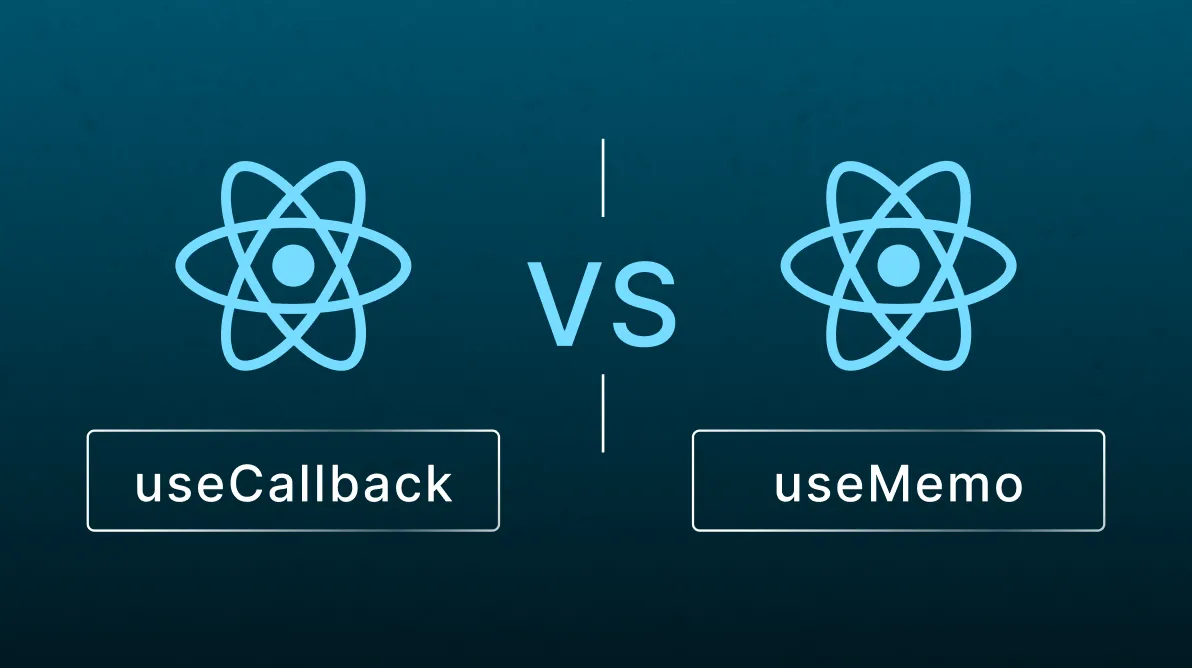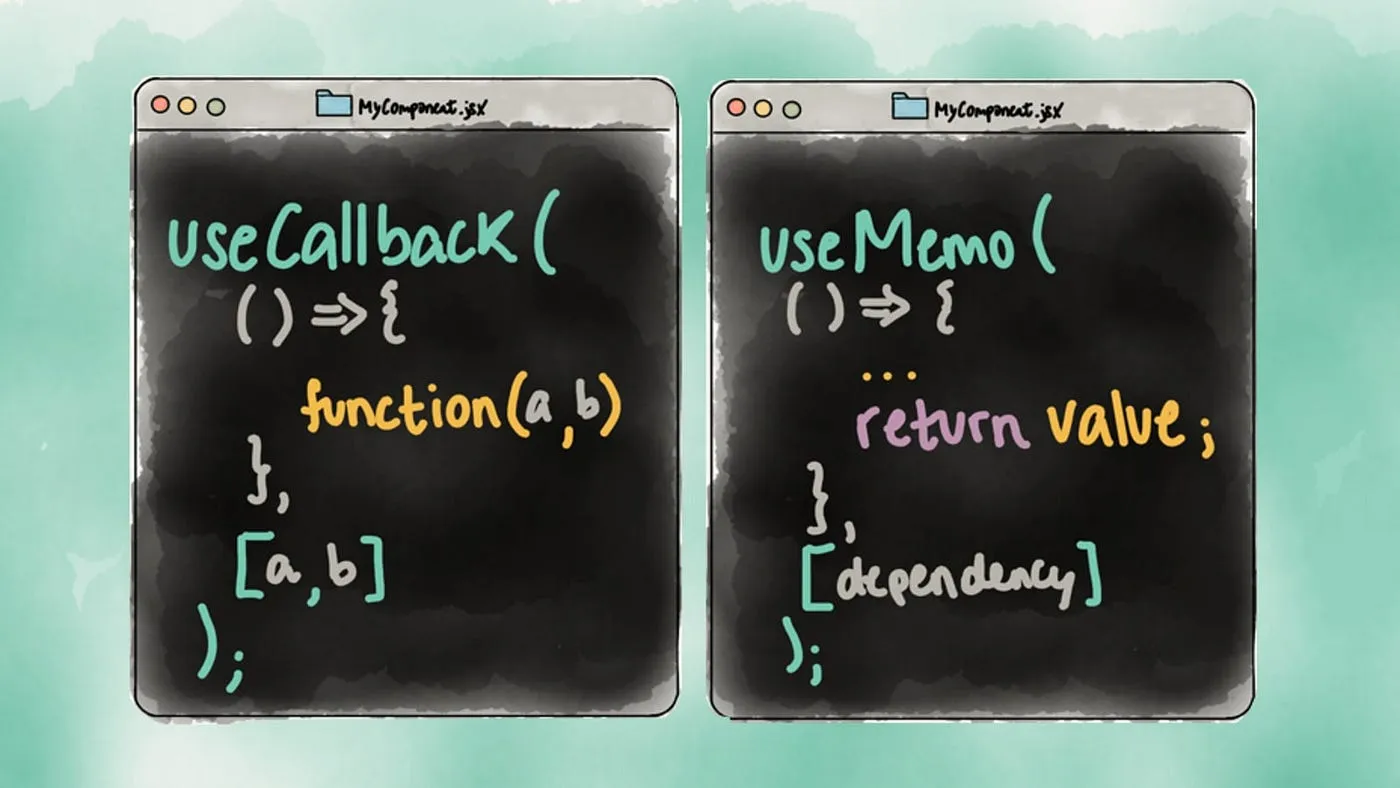If you've ever worked with React, you've probably heard about the never-ending battle against the enemy called unnecessary re-renders. This is where useCallback and useMemo appear as saviors, helping your app run smoother, faster, and more efficiently.

But what exactly are they? How do they work? And most importantly, when should (and shouldn't) you use them? Let's unveil the mystery behind this "power duo"!
The Root of the Problem: Why Are Re-renders the "Bad Guy"?
To understand the power of useCallback and useMemo, we first need to understand the "enemy" we're facing. In React, a component re-renders whenever its state or props change.
The problem lies in how JavaScript handles equality for objects and functions.
// Every comparison, even if they look identical, results in two different objects in memory!
console.log({} === {}) // false
console.log([] === []) // false
console.log((() => {}) === (() => {})) // false
What does this mean in React? Every time a parent component re-renders, all functions and objects defined inside it are recreated. Even if the function's code hasn't changed, its reference in memory is different.
When you pass these new functions or objects down to child components as props, React thinks "Oh, the props have changed!" and causes the child to re-render unnecessarily. This is where your app's performance can start to suffer.
useMemo: When You Want to "Remember" an Expensive Value 🧠
useMemo is a hook that lets you memoize the result of an expensive computation. It will only recalculate that value when one of its dependencies changes.
Syntax:
const memoizedValue = useMemo(() => computeExpensiveValue(a, b), [a, b])
- Computation function:
() => computeExpensiveValue(a, b)is where you perform heavy calculations (filtering large arrays, complex math, etc.). - Dependency array:
[a, b]is the list of values thatuseMemowatches. If any value in this array changes, the computation runs again. Otherwise,useMemoreturns the memoized value from the previous render.
When should you use useMemo?
- Optimizing heavy computations: When you have a function that processes large data or is time-consuming, wrap it in
useMemoto avoid recalculating on every render. - Maintaining reference stability for objects/arrays: When you need to pass an object or array to a child component, use
useMemoto ensure its reference doesn't change if its contents haven't changed.
Real-world example:
Imagine you have a product list and a function to filter expensive products.
// Without useMemo: The filter runs every time the component re-renders
const expensiveProducts = products.filter((product) => product.price > 1000)
// With useMemo: The filter only runs when 'products' changes
const expensiveProducts = useMemo(() => {
console.log('Filtering expensive products...') // You'll see this log less often
return products.filter((product) => product.price > 1000)
}, [products])
useCallback: When You Want to "Remember" a Function 📜
Very similar to useMemo, but instead of memoizing a function's return value, useCallback memoizes the function itself.
Syntax:
const memoizedCallback = useCallback(() => {
doSomething(a, b)
}, [a, b])
Simply put, useCallback returns an "immutable" version of your function. This version only changes if one of the dependencies in [a, b] changes.
Fun fact: useCallback(fn, deps) is equivalent to useMemo(() => fn, deps). useCallback is just a convenient shorthand for this specific case.
When should you use useCallback?
- Passing callbacks to optimized child components: This is the most common and important use case. When you have a child component wrapped in
React.memoand you need to pass an event handler (likeonClick,onSubmit), useuseCallback. This prevents creating a new function on every render, allowingReact.memoto work effectively. - As a dependency for other hooks: When a function is used inside
useEffect,useLayoutEffect, or evenuseMemo, wrapping it inuseCallbackhelps avoid infinite loops or unnecessary effect reruns.
Real-world example:
const ParentComponent = () => {
const [count, setCount] = useState(0)
// Without useCallback, this function is recreated on every render
// const handleIncrement = () => console.log("Increment!");
// With useCallback, handleIncrement is only created once
// and its reference doesn't change between renders.
const handleIncrement = useCallback(() => {
console.log('Increment!')
}, []) // Empty dependency array since the function doesn't depend on any value
return (
<div>
<p>Count: {count}</p>
<button onClick={() => setCount(count + 1)}>Re-render Parent</button>
{/* ChildComponent won't re-render unnecessarily anymore */}
<ChildComponent onIncrement={handleIncrement} />
</div>
)
}
// React.memo does a shallow comparison of props; if props don't change, it won't re-render
const ChildComponent = React.memo(({ onIncrement }) => {
console.log('Child re-rendered!')
return <button onClick={onIncrement}>Increment Button</button>
})
Head-to-Head: useCallback vs. useMemo

Quick comparison table of the most important criteria:
| Criteria | useMemo | useCallback |
|---|---|---|
| Purpose | Memoize a value (function result) | Memoize a function |
| Returns | The memoized value (string, number, object, array) | The memoized function |
| Similar to | "Remember the answer to this problem" | "Remember the solution method to this problem" |
| Use case | Heavy computations, stable object/array props | Passing callbacks to child, hook dependencies |
Pitfalls to Avoid: When NOT to Use Them ❌
Although powerful, overusing useCallback and useMemo can backfire. Remember: Optimization also has a cost.
These hooks themselves require memory to store values/functions and time to compare dependencies.
Golden rules:
- Don't optimize prematurely: Don't blindly wrap everything in
useCallback/useMemo. - Measure before acting: Use tools like React DevTools Profiler to pinpoint which components are re-rendering unnecessarily and causing performance bottlenecks.
- Top priority: The clearest and most beneficial use case is when passing props (functions or objects) to child components wrapped in
React.memo.
Conclusion: The Perfect Trio—React.memo, useCallback, useMemo
Think of them as a team. React.memo is the gatekeeper, blocking unnecessary re-renders. But this guard is only effective when useCallback and useMemo provide it with "stable passes" (props) that don't change reference on every render.
- Use
useMemoto memoize values. - Use
useCallbackto memoize functions. - Both serve to maintain referential equality, preventing unnecessary re-renders.
Mastering this duo not only makes your app faster but also shows you have a deep understanding of React performance. Happy coding! 🚀
![[React Basics] Rendering Lists in React: Best Practices and Performance Optimization](/images/blog/rendering-lists-in-react.webp)
![[React Basics] Code Splitting: The Must-Know Performance Optimization Technique](/images/blog/code-splitting-in-react.webp)
![[React Basics] How to Deploy a React App Easily in 5 Minutes](/images/blog/typescript-with-react.webp)
